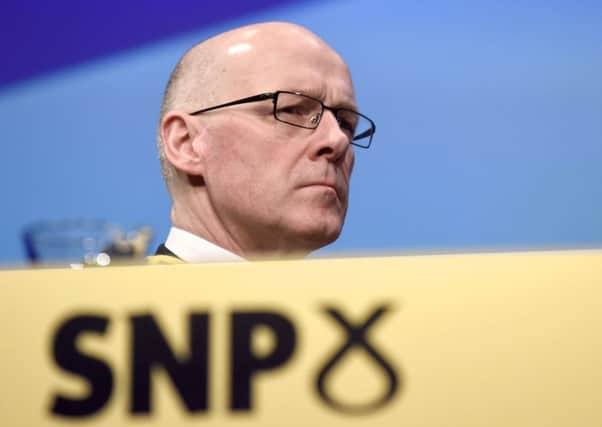Tom Peterkin: SNP's tax plans based on pragmatism not vision


This week has already seen a crucial staging post in that process – namely the Scottish Government’s announcement of how it intends to use those powers. In all sorts of ways this was one of the key moments in what is likely to be a contest that will be vigorously fought, even though the result (in terms of who wins) appears to be a foregone conclusion.
It is the inevitability of a SNP victory that made Tuesday’s press conference so important. The plans Nicola Sturgeon laid out are the ones that will determine how much income the people of Scotland will have at their disposal and how much funding public services will receive.
Advertisement
Hide AdAdvertisement
Hide AdLittle of what Sturgeon announced came as a surprise. She had already signalled that Scotland would not adopt the tax break for higher earners announced by George Osborne in last week’s Budget. Neither did the SNP back the reintroduction of a 50p rate for those earning over £150,000 – again a position that had been widely anticipated despite earlier suggestions to the contrary.
Finance secretary John Swinney appears to have heeded the warnings of those who warned that such a move was likely to prove counter-productive. Despite the SNP’s eagerness to present itself as a left-leaning party, Swinney and Sturgeon have bought into the argument that raising the income tax rate for the most wealthy would see a reduction in tax take, because this highly mobile sector of society would be discouraged from living in Scotland.
Sturgeon’s refusal to pass on Osborne’s tax breaks, which will see higher earners south of the Border have their income tax threshold for the 40p rate eventually raised to £50,000, means that for the first time a section of Scottish society will face a higher tax bill than their counterparts south of the Border.
Even so, the over-riding criticism of the SNP is that it has been too timid. Chief among the critics is the Labour Party, who pledged to put a penny on income tax across all bands. Interestingly, they also chose Tuesday to unveil their plans for abolishing the council tax and replacing it with a system based on current property values.
This plays to Labour’s election narrative that it is the party that is not afraid to actually use the powers coming to Holyrood. How and if the new tax would actually work is difficult to understand. Labour, however, has the unfortunate luxury that it can afford to make bold promises in the knowledge that defeat in May means it will not be held to those pledges.
The opposite is true for Swinney. His plans may be timid, but they are born out of pragmatism. They have to work, because he knows that the SNP are returning to government. The new system needs time to bed in and if there’s evidence that the behemothic HMRC is struggling, that will create bad publicity, ill-will and financial confusion. The finance secretary is keenly aware of this and has therefore played it safe.
But beside all the rhetoric about new powers there is also the wider picture. How practical is it to have two distinct tax systems on one small island made up of four nations who have so many economic ties? Perhaps this is something to ponder on “independence day”.